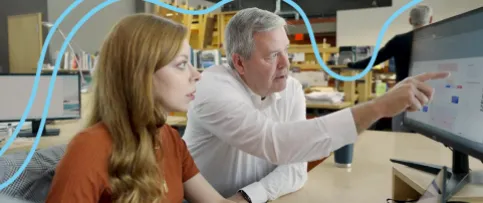We caught up with 2014 Intern Think Tank (ITT) member Ralph Raymond to chat about his strategy for passing the ARE, favorite tools for keeping track of IDP hours, and the benefits of joining a professional association. Plus, the Haitian-born architect shares his aspirations of improving the design of his home country.
Why did you want to become an architect?
I've wanted to be an architect since kindergarten. The building blocks during playtime initially captured my attention, and the more I learned about the profession, the more I became certain that I was on the right path. Even at a young age, it became my goal to improve the design and living conditions of my home country, Haiti. As an architect I would have the potential to use both creativity and technical expertise to address issues ranging from recreational past times to basic living standards. This goal remains at the forefront of my mind even today.
You completed the ARE in four months. What was your study strategy?
To never think I knew enough. My strategy was to study not only the questions covered in my study materials, but to analyze why those questions were asked. This way, I was able to better understand the intent of each concept, strategy, or piece of equipment. I also traveled with a notebook where I documented most of my studying, which encouraged impromptu studying and instantaneous memory refreshing.
How did you keep track of your remaining IDP hours? Did you have regular meetings with your supervisor?
I initially used the NCARB IDP Excel sheet, logging eight-week increments into my NCARB Record. As NCARB updated the online system and now the mobile app, I was able to use those as well. The interns in my office also held one another accountable, so there was a great support system for tracking hours. On top of regular meetings, I found it easy to print out the IDP summary from my NCARB Record and have it sit on my desk. It’s like having an image of your dream car to remind yourself of your goals—or in this case, the hours you need to gain next. This made dialogue about IDP with my supervisor more of an informal conversation rather than a structured meeting. I have a great deal of reverence for my supervisors and the leadership at HOK who were proactive in my development.
You’ve been a member of the National Organization of Minority Architects (NOMA) since 2009. How has joining a professional organization helped shape your career?
I joined Georgia Tech's NOMA student component in 2009. Since then, I have been blessed with job opportunities, along with a great network of mentors, colleagues, and friends. Without the connections I made through NOMA, the journey to where I am today would have been much more difficult.
Why was earning a license important to you?
As every architect, intern, and architecture major knows, it can take a long time to obtain an initial license. But now I can focus on the practice of architecture. Architecture is an art mastered after many years, and I wanted to be able to spend more time honing my delivery of projects. On top of that, my parents always introduced me as their son, the architect. Of course, I had to rise to the occasion and become registered.
Tell us about your experience as a member of the 2014 Intern Think Tank (ITT).
The 2014 ITT was a great experience that highlighted some of the commonalities and differences between the various paths to licensure. I was extremely content knowing how intently NCARB is working to address these items with state boards, interns, and firms. The number of improvements in development will help address various concerns and put everyone in the profession on the same page, or at least within the same few pages. Two examples that come to mind include the "architectural intern" title discussion and the streamlined IDP. I definitely appreciate being able to hear the thoughts of other ITT members and engage in conversation about the development of our profession. Thank you NCARB for the opportunity!



